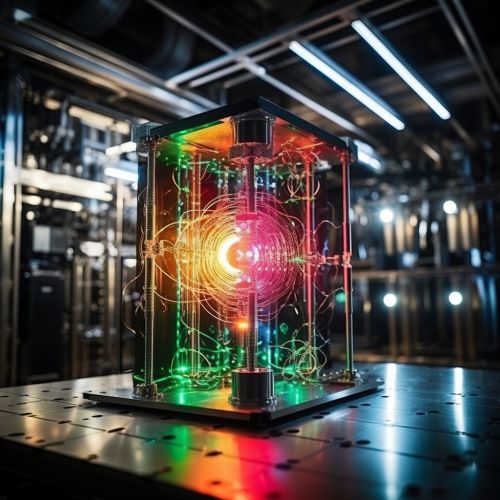Quantum Cryptography
Introduction
Quantum cryptography is a method of securing communication by applying the phenomena of quantum mechanics. It uses individual quantum particles to send data securely. This method of cryptography is considered to be unbreakable, providing a high level of security.


Quantum Key Distribution
The most well-known and developed application of quantum cryptography is Quantum Key Distribution (QKD). QKD is a method of transmitting cryptographic keys securely, using the principles of quantum mechanics. The keys are used to encrypt and decrypt messages. The security of QKD is based on the fundamental properties of quantum mechanics, in particular, the Heisenberg Uncertainty Principle and the principle of quantum superposition.
Principles of Quantum Cryptography
Quantum cryptography is based on two main principles of quantum mechanics: the Heisenberg Uncertainty Principle and the principle of quantum superposition.
Heisenberg Uncertainty Principle
The Heisenberg Uncertainty Principle states that it is impossible to simultaneously measure the exact position and momentum of a quantum particle. In the context of quantum cryptography, this principle ensures that an eavesdropper cannot copy the quantum state of a particle without disturbing it.
Quantum Superposition
The principle of quantum superposition is another fundamental concept in quantum mechanics. It states that a quantum system can exist in multiple states simultaneously, and it is only when the system is measured that it collapses into one of its possible states. This property is used in quantum cryptography to create a secure communication channel.


Quantum Cryptography vs. Classical Cryptography
Quantum cryptography differs significantly from classical cryptography. Classical cryptography relies on the computational difficulty of certain problems such as factoring large numbers or solving discrete logarithm problems. Quantum cryptography, on the other hand, relies on the laws of physics. This makes quantum cryptography potentially more secure because it is not susceptible to advances in computational power or mathematical algorithms.
Quantum Cryptography Protocols
There are several protocols for quantum key distribution, the most famous of which are BB84, B92, and E91.
BB84
The BB84 protocol was the first quantum key distribution protocol. It was proposed by Charles Bennett and Gilles Brassard in 1984. The protocol uses the polarization of photons to transmit information.
B92
The B92 protocol is a simplified version of BB84. It was proposed by Charles Bennett in 1992. Unlike BB84, which uses four states of polarization, B92 uses only two.
E91
The E91 protocol was proposed by Artur Ekert in 1991. It is based on the concept of quantum entanglement.


Applications of Quantum Cryptography
Quantum cryptography has a wide range of potential applications, including secure financial transactions, secure governmental communications, and secure data transmission in general.
Limitations and Challenges
Despite its potential, quantum cryptography also has several limitations and challenges. These include technological challenges related to the transmission of quantum states, as well as potential security vulnerabilities.
Future of Quantum Cryptography
The future of quantum cryptography is promising, with ongoing research and development aimed at overcoming its current limitations and challenges. The advent of quantum computers could also have a significant impact on the field of quantum cryptography.


